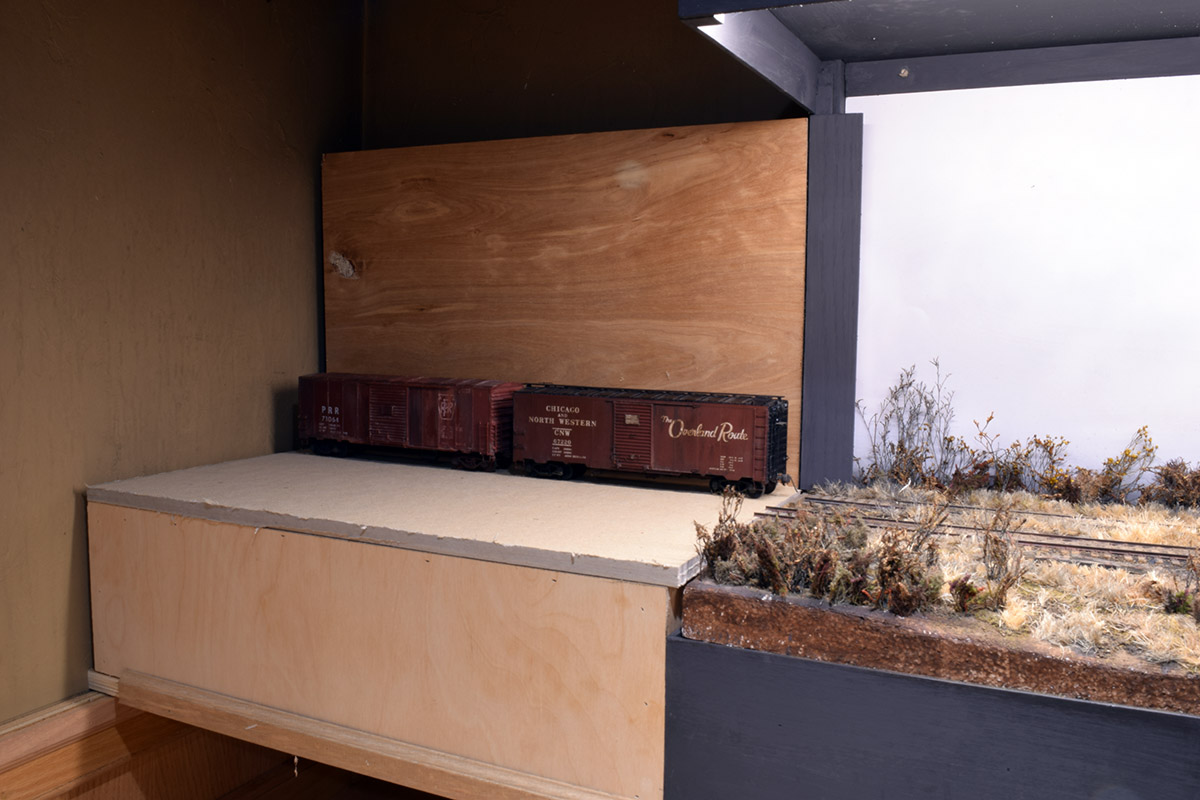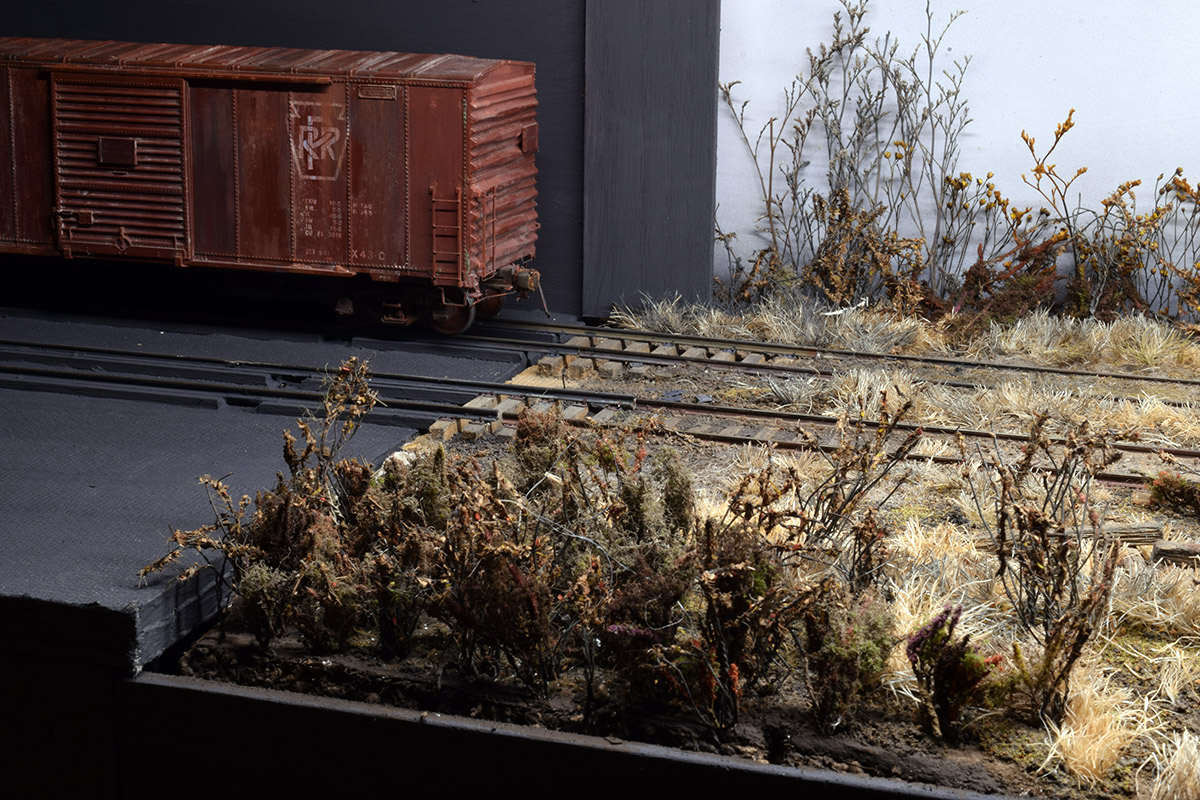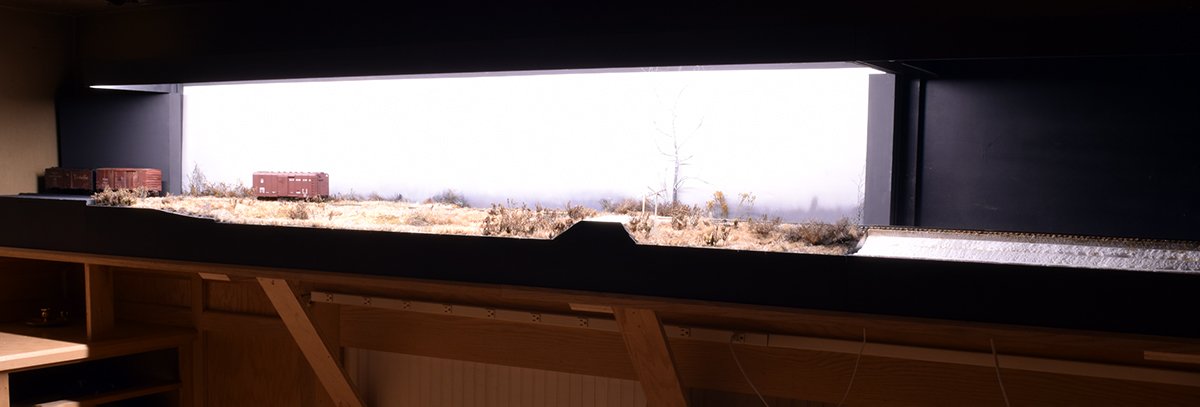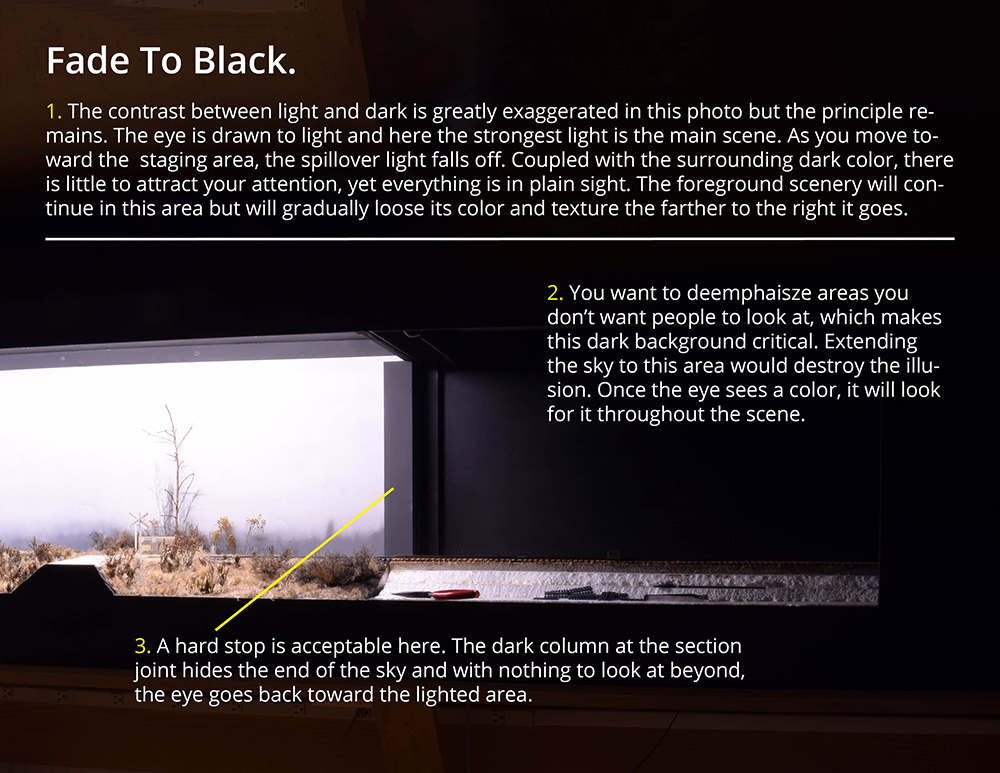Staging The Set
With the modest size of my Mill Road cameo, a conventional staging yard is unnecessary, a fact I embrace now that the bulk of the scene is complete. However, with the I&W, I discovered how important it is to have a train or locomotive leave the scene. The modest size of Mill Road makes this even more important.
I’ve completed a small module that allows me to extend both tracks offstage to the left, where I can park a locomotive and a couple of cars. It’s nothing more than a simple box that matches the dimensions of the primary framework for a consistent appearance. As you can see I painted everything, including the track, in the same dark charcoal gray as the cameo. Spillover light from the main module is the only source of illumination. More light isn’t needed or desired here.


I included the rear panel to hide the light colored wall surface that drew my eye in spite of the subdued lighting.
In these photos the room lights are off. The only illumination is from the layout. You can see how the freight cars seem to fade away as the light falls off.



Regards,
Mike
Perfect timing on posting this Mike. I am planning on something similar and this has provided quite a few ideas.
Thank you very much!
You’re welcome Shawn. Glad it’s useful for you.
Mike
Bloody clever!
Cheers friend.
Mike